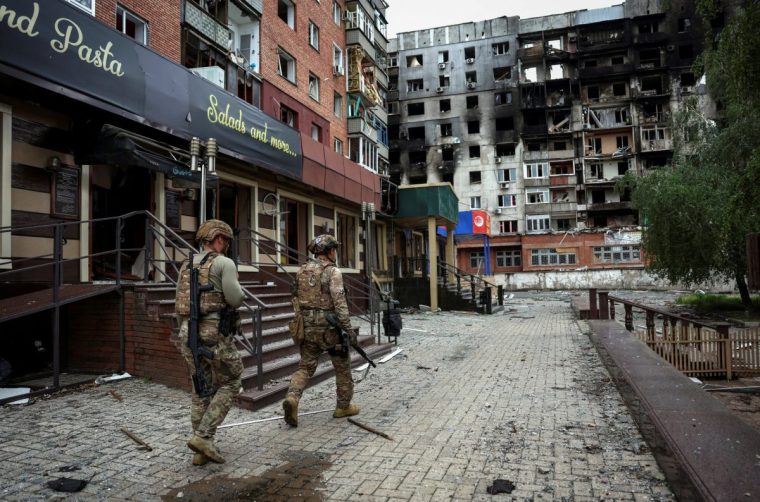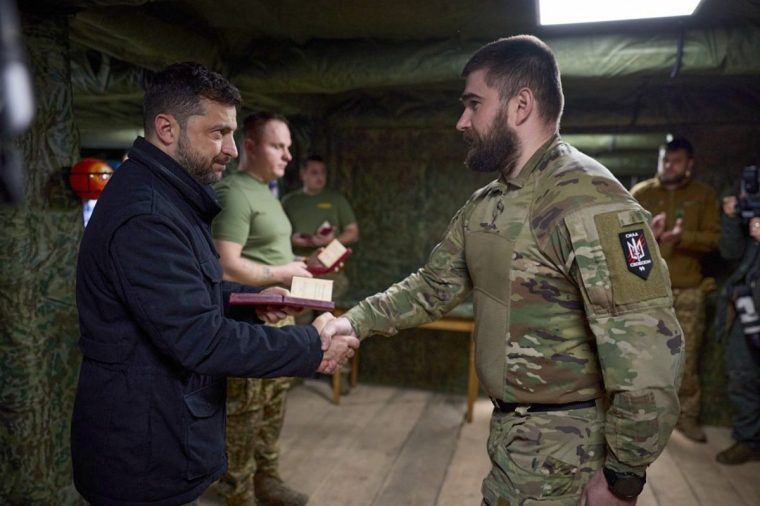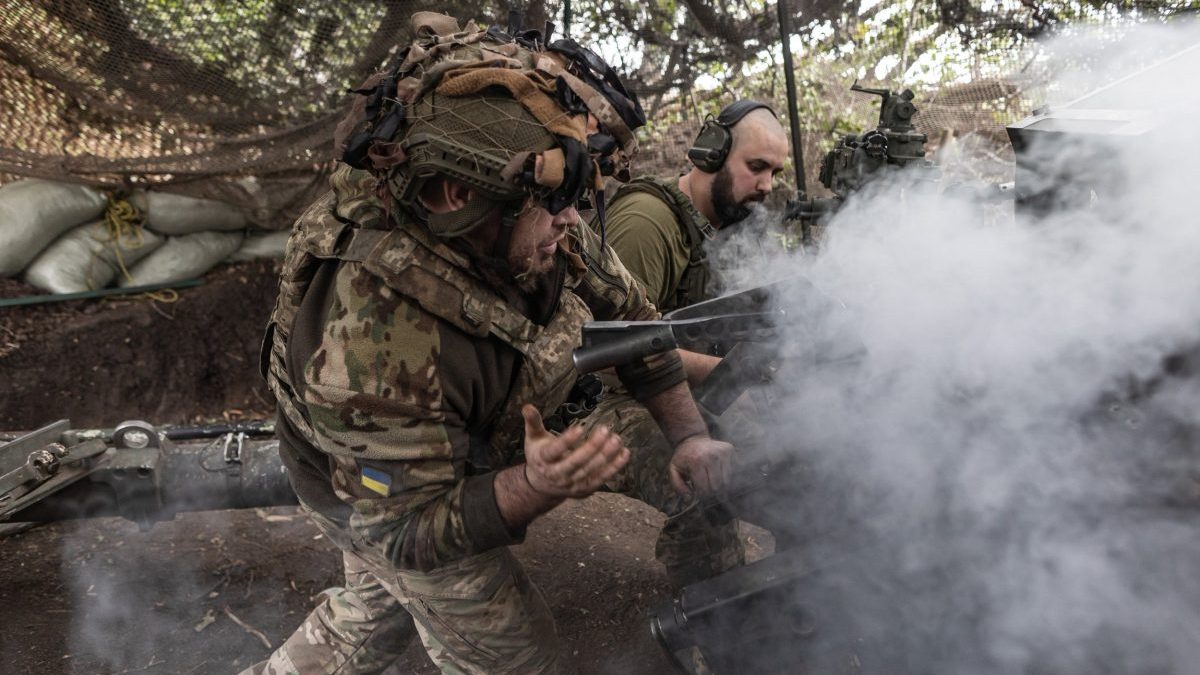The city of Pokrovsk is at the epicentre of the Ukraine war, with a third of all frontline clashes happening there
The bloody battle for a key eastern Ukrainian city appears to have entered its final throes, as Russian troops close in.
Soldiers fighting in Pokrovsk, in the Donetsk Oblast, told The i Paper it was now only a “matter of time” until the city falls.
The battle has followed an increasingly common Russian strategy to attack in small groups, attempting to wear down Ukrainian defences before a final takeover, soldiers and analysts said.
New FeatureIn ShortQuick Stories. Same trusted journalism.
‘Horseshoe’ manoeuvre to hem in Ukrainian troops
One Ukrainian soldier fighting in the area said advancing groups could be as small as two or three Russians.
Another said the troops approach Ukrainian positions in a horseshoe shape until they are almost encircled.
The Ukrainians are instructed by senior leadership to remain in position until the final possible moment, he said, even if the position is largely destroyed.
This is the grim reality of the brutal battle for Pokrovsk seen through the eyes of Ukrainian soldier fighting there. The city has become the epicentre of the fight against Putin’s invasion. A Ukrainian soldier on the frontline said situation was now critical, and that it was only a matter of time until Russia takes the city. The i Paper’s Global Affairs Correspondent Molly Blackall looks at why this battle has become so pivotal.
“Russia is using small unit tactics because it’s impossible to concentrate a lot of forces, not because they don’t want to, or because they don’t have the manpower,” the serving soldier, who we are keeping anonymous for security reasons, told The i Paper.
“They push wherever they can. In some areas, where we have less troops or less resources, they have success. You will send 100 men towards 30 men. Some of these groups will make some progress. And you just push some more people there, where they have success. Those who stay will be encircled and attacked from the flank.”
Dr Marina Miron, of the war studies department at Kings College London, said the tactics seen in Pokrovsk were different from the “meat grinder” approach in other battles like Bakhmut.
“From Ukrainian reports, the Russians are using three to four people on foot to infiltrate different areas across can establish footholds,” she said.
“This tactic has been used quite a lot recently, and at least in official sources and some blogger sources from the Russian side, they’re saying Russia has changed its approach to not do any frontal assaults in cities because it’s costing too many human lives or too many soldiers.”
 Members of the White Angel unit of Ukrainian police officers who evacuate people from the frontline towns and villages, check an area for residents in the frontline town of Pokrovsk
Members of the White Angel unit of Ukrainian police officers who evacuate people from the frontline towns and villages, check an area for residents in the frontline town of Pokrovsk
(Photo: Anatolii Stepanov/Reuters)
The Russian approach has leveraged its superior manpower over Ukraine, sending in wave after wave of troops with little concern for the high rates of casualties, to overrun and exhaust Ukraine’s defences.
But this has come at a high cost, with more than a million Russian casualties in the war so far, with at least 250,000 of those killed or missing presumed dead, according to western officials.
The Ukrainian military said today that 1,150,100 Russian troops had been killed or injured to date. Ukraine keeps its own losses closely guarded.
It has bolstered its manpower by building ‘Storm’ units, made up of men from Russia’s penal colonies, who have been sent to the frontlines in exchange for their prison sentence being commuted.
“I don’t see the same degree of sacrifice when it comes to taking Pokrovsk,” Miron said. “But generally speaking, wars mean casualties, and Russia is able to absorb those casualties.”
Drone warfare
The battle for Pokrovsk also typifies the use of drones, which have become integral to both sides in the war in Ukraine to identify and strike targets.
Russia’s defence ministry said that “operational and tactical aircraft, backed by drones” had “significantly disrupted” Ukrainian supply lines in Pokrovsk.
The i Paper understands that some Ukrainian units have struggled to access food and water for temporary periods during the battle.
Chilling footage released by the Ukrainian military shows Russian troops being tracked and closed in on by Ukrainian drones in Pokrovsk.
 Ukrainian President Volodymyr Zelensky recently visited the area and awarded servicemen (Photo: Ukrainian Presidential Press Office via AP)
Ukrainian President Volodymyr Zelensky recently visited the area and awarded servicemen (Photo: Ukrainian Presidential Press Office via AP)
With the help of drones, Ukraine is pushing back against Russian advances in Pokrovsk and targeting them in nearby Dobropillya, which has successfully tied up Russian forces and hinder their takeover of Pokrovsk, according to the Institute for the Study of War.
Last week, Kyiv deployed special forces to Pokrovsk. It claims that Russia has amassed 170,000 troops on Pokrovsk’s outskirts but denied that Ukrainian forces were encircled.
Attritional war forced on Russia
Sam Cranny Evans, an associate fellow at defence think tank Rusi, said that the Russian approach appears to be to twofold; to take territory represented by key urban areas and to kill as many Ukrainian soldiers as possible.
“To some extent, this is forced upon them because it’s too difficult to pull a large force together and conduct a concerted offensive in the way that would be needed to break the front,” he said.
“It’s quite difficult for either side to move around and change things quickly.”
The attritional approach was not Russia’s first course of action.
 A Ukrainian soldier walks past damaged buildings in central Pokrovsk, in the Donetsk region of Ukraine, April 2025. (Photo: Michael Shtekel/AP)
A Ukrainian soldier walks past damaged buildings in central Pokrovsk, in the Donetsk region of Ukraine, April 2025. (Photo: Michael Shtekel/AP)
Putin’s forces initially made large gains; after the first five days of the full-scale invasion, it controlled almost 119,000 sq km (45,946 sq miles) of Ukrainian territory.
Less than a month into the invasion, Russia had seized more than a quarter of Ukraine, according to the Institute for the Study of War.
But as Ukrainian troops were bolstered and the international community provided support, Russia pulled back from the northern areas and by mid April had given up about 40 per cent of the gains it had made.
On 11 September, Ukraine re-took 4,000 sq km overnight, the biggest push in a single day.
Since November 2022, the territory held by each side has remained broadly the same.
“The Russians tried to settle things quickly, it didn’t work. It was a strategy that worked in Hungary, Czechoslovakia, and Georgia. But failed in Chechnya and Afghanistan,” Cranny Evans said. “When it fails, the tendency seems to be to double down and fight until the end.”
Your next read

